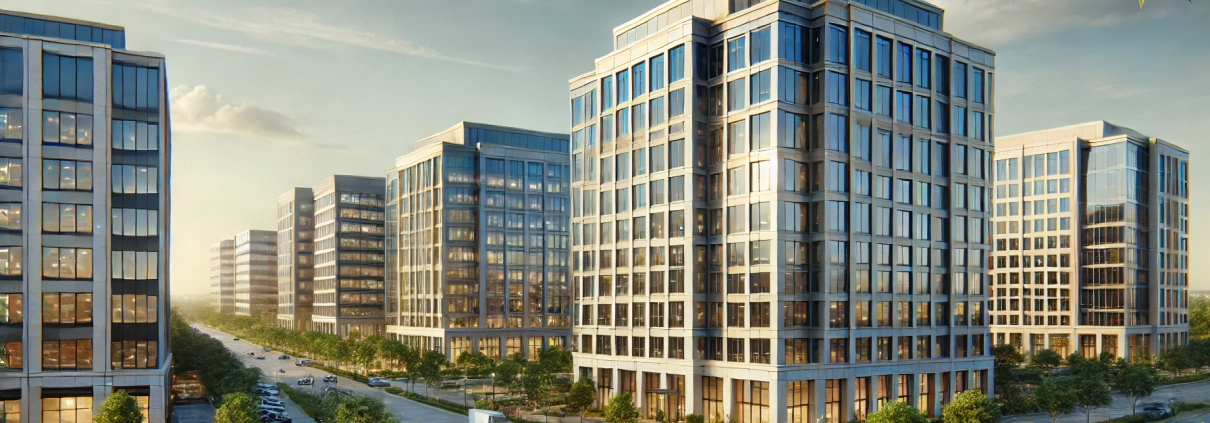Cap Rate
The Cap Rate, or Capitalization Rate, is the percentage derived by dividing a stabilized asset’s annual Net Operating Income (NOI) by its market value. The Cap Rate is a commonly used metric in commercial real estate to estimate the value of an income-producing property.
Real estate professionals look to cap rates as a common valuation tool when making a variety of investment decisions, such as purchasing, financing, reporting, or selling a property. For example, when evaluating a Class A office building in a particular market, they might observe that similar properties have been trading at cap rates between 6.5% and 7.0% over the past six months. By dividing the expected stabilized net operating income by a cap rate within this range, they can estimate the property’s market value.
Cap rates can vary significantly based on factors such as property type, location, and prevailing market conditions.
Putting ‘Cap Rate’ in Context
Investors Asset Management, a real estate investment manager, is responsible for overseeing a diverse portfolio of commercial properties, including Ridgeview Office Park, a 150,000-square-foot suburban office complex in Dallas, Texas. As part of their regular quarterly asset management responsibilities, the team at Investors Asset Management conducts a valuation of Ridgeview Office Park to assess its current market value.
Calculating the Expected NOI
For the valuation, the team begins by projecting the expected forward 12-month Net Operating Income (NOI) for Ridgeview Office Park. Based on current leases, expected renewals, and market conditions, they estimate that the property will generate $3.75 million in NOI over the next 12 months. This figure includes all rental and other income adjusted for vacancy (effective gross revenue), less operating expenses such as utilities, common area maintenance, property management fees, insurance, and taxes.
Determining the Appropriate Cap Rate
Next, the team looks to the local market to determine an appropriate capitalization rate. They analyze recent sales comps of similar suburban office properties in the Dallas area. Over the past six months, comparable office buildings have been trading at cap rates between 6.5% and 7.0%, depending on factors such as tenant creditworthiness, lease terms, and property condition.
Given Ridgeview Office Park’s strong tenant base and well-maintained facilities, Investors Asset Management determines that a cap rate of 6.75% is appropriate for this valuation.
Valuing the Property
With the expected NOI and the cap rate in hand, the team can now calculate the market value of Ridgeview Office Park at the end of the quarter. They apply the cap rate to the projected NOI using the following formula:
Market Value = NOI / Cap Rate
Market Value = $3,750,000 / 6.75% = $55,555,556
Based on this calculation, Investors Asset Management values Ridgeview Office Park at approximately $55.56 million as of the end of the quarter.
This valuation not only provides a snapshot of the property’s current worth but also informs strategic decisions regarding the asset, such as refinancing, potential sale, or reinvestment strategies. The cap rate, therefore, plays a crucial role in how Investors Asset Management determines the value of its assets and makes informed decisions on behalf of its investors.
Frequently Asked Questions about Capitalization Rate (Cap Rate)
What is a Cap Rate in real estate?
The Cap Rate, or Capitalization Rate, is the percentage derived by dividing a stabilized asset’s annual Net Operating Income (NOI) by its market value. It is commonly used to estimate the value of an income-producing property.
How do you calculate the Cap Rate?
Cap Rate = Net Operating Income (NOI) ÷ Market Value. For example, if a property has an NOI of $3.75 million and a market value of $55.56 million, the cap rate would be 6.75%.
What factors influence a property’s Cap Rate?
Cap rates can vary based on property type, location, tenant creditworthiness, lease duration, building condition, and overall market conditions. For instance, Class A office buildings in stable markets tend to have lower cap rates than riskier assets.
Why is the Cap Rate important for investors?
The Cap Rate is a key valuation tool used by investors to assess return potential and compare different investment opportunities. It helps determine how much income a property generates relative to its value.
How does Cap Rate relate to property value?
Cap Rate is used to calculate property value using the formula: Value = NOI ÷ Cap Rate. In the case of Ridgeview Office Park, with a $3.75 million NOI and a 6.75% cap rate, the value was estimated at approximately $55.56 million.
Can Cap Rates change over time?
Yes, cap rates fluctuate based on market dynamics, interest rates, investor sentiment, and macroeconomic trends. A tightening market with strong demand may compress cap rates, while higher risk environments may cause them to rise.
Click here to get this CRE Glossary in an eBook (PDF) format.

